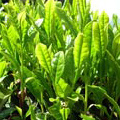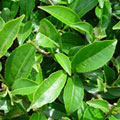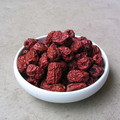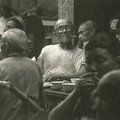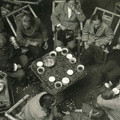Kabusé 2013
 5.0 This review helped: 0 / 0
5.0 This review helped: 0 / 0
I have stuck my nose into the bag and inhaled aroma of tea. It smelled sweet after strawberry jam.
The leaves are dark green and beautifully shiny.
Kabusé is substantially the same as Sencha. The only difference is that the tea bushes are 10 days before harvest covered with mats. This will reduce the amount of sunlight falling on leaves and tea is therefore forced to increase the amount of chlorophyll to allow photosynthesis even with less sunlight. The taste is then finer and less bitter compared to Sencha .
It's a pleasant tea. At first infusion I am using very cold water about 45°C. I am steeping for about 1 minute. Brew is very light in color with a fine haze. The taste is sweet, like cream with no signs of bitterness, only gently astringent grassy taste.
The second infusion - again cold water and steeping for 10s only. Still no bitterness, astringency is little stronger. Sweet and salty taste. The grassy taste, where I am finding traces of strawberry jam. You can observe very mild bitterness at the end in your mouth.
Just goodness.
Was this review helfule? Yes / No
 1 review
Added 13.01.2014 by Eternal Spring,
Tea status: [322] A
4545x
1 review
Added 13.01.2014 by Eternal Spring,
Tea status: [322] A
4545x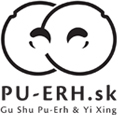

 Shops
Shops

 Share on Facebook
Share on Facebook











